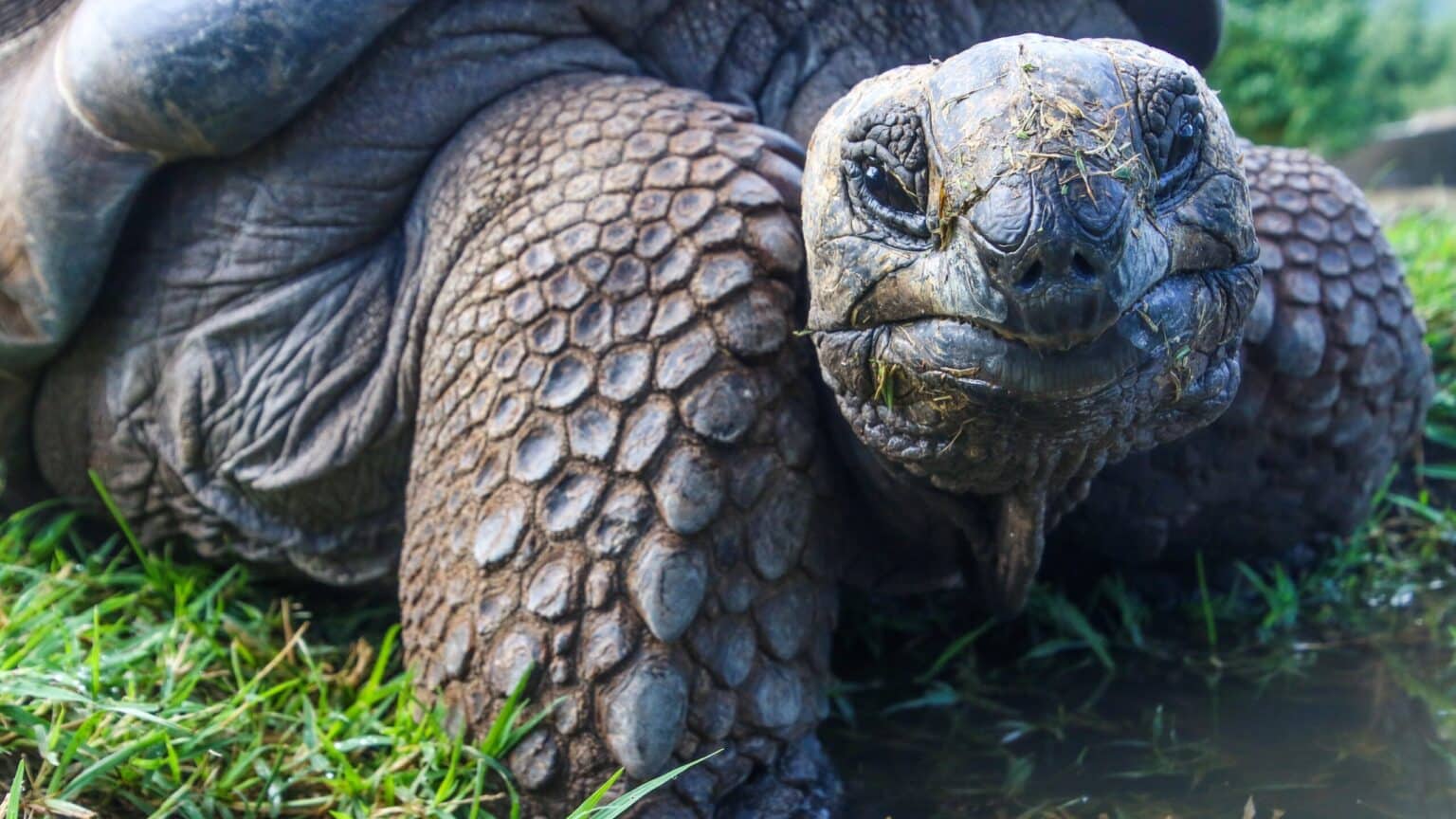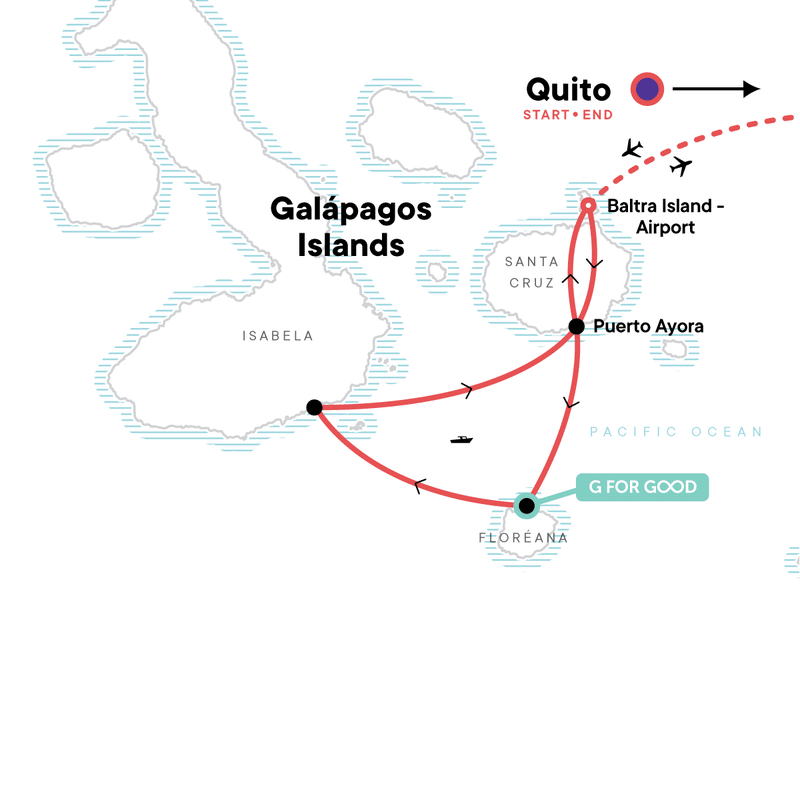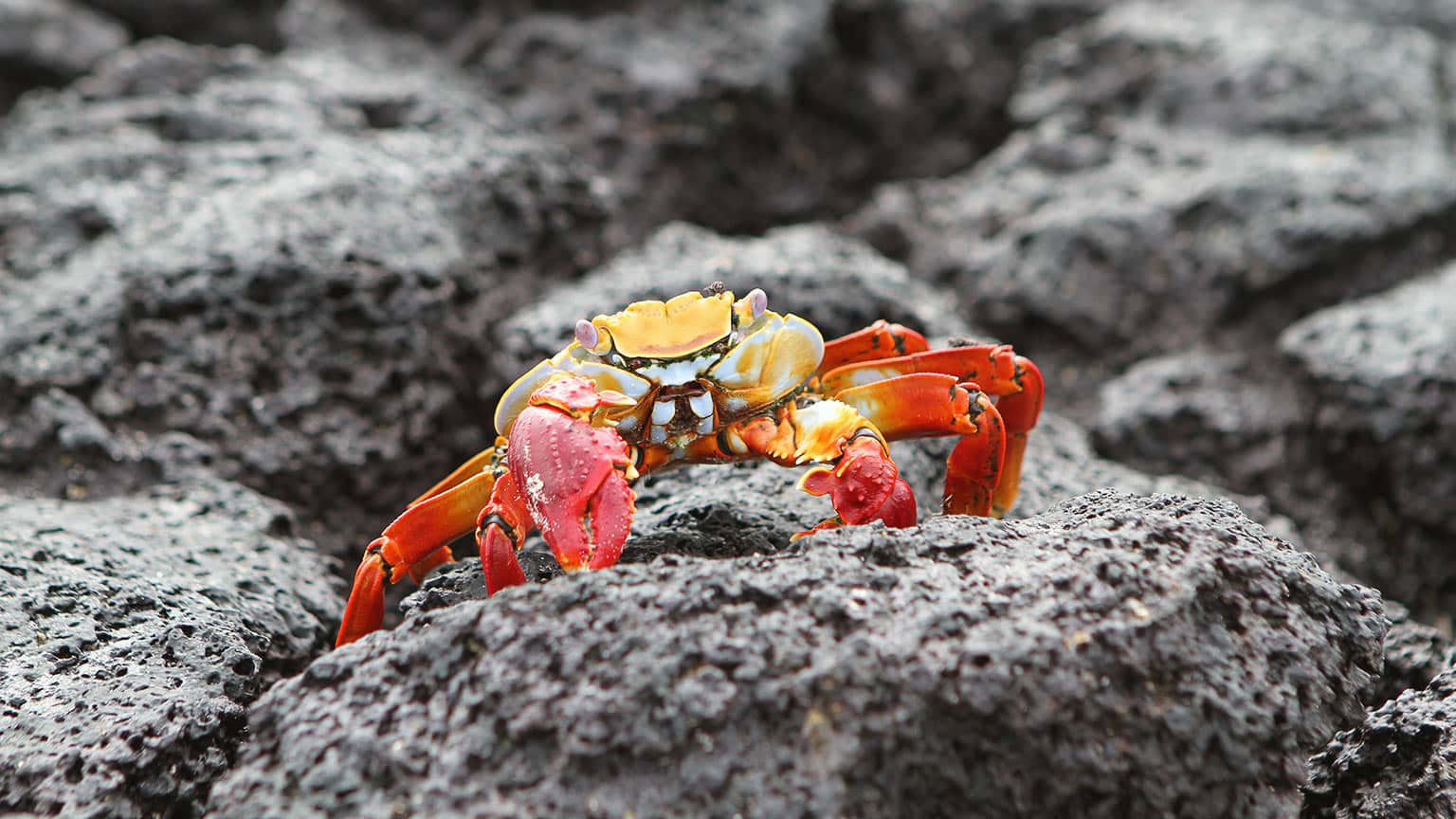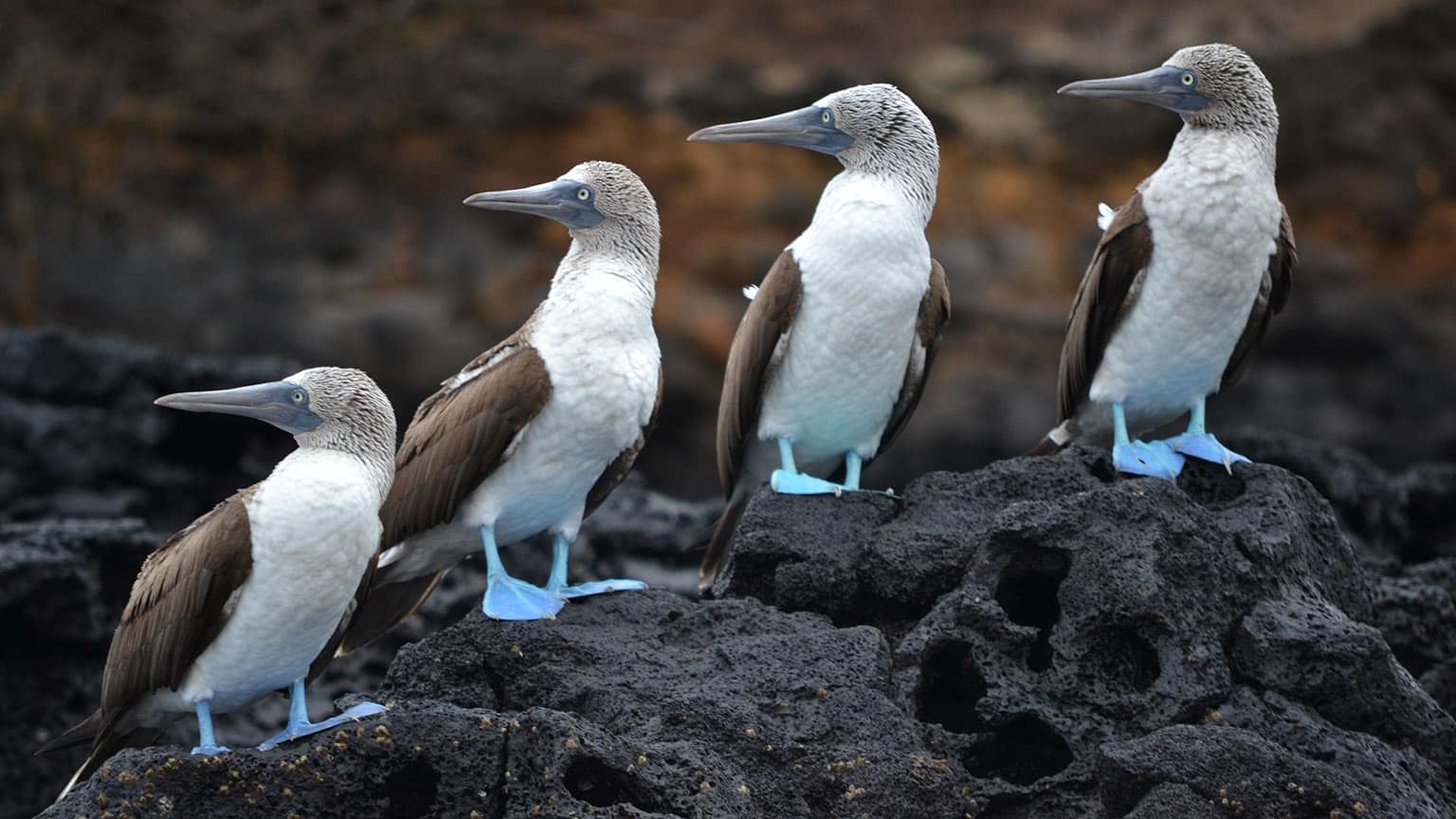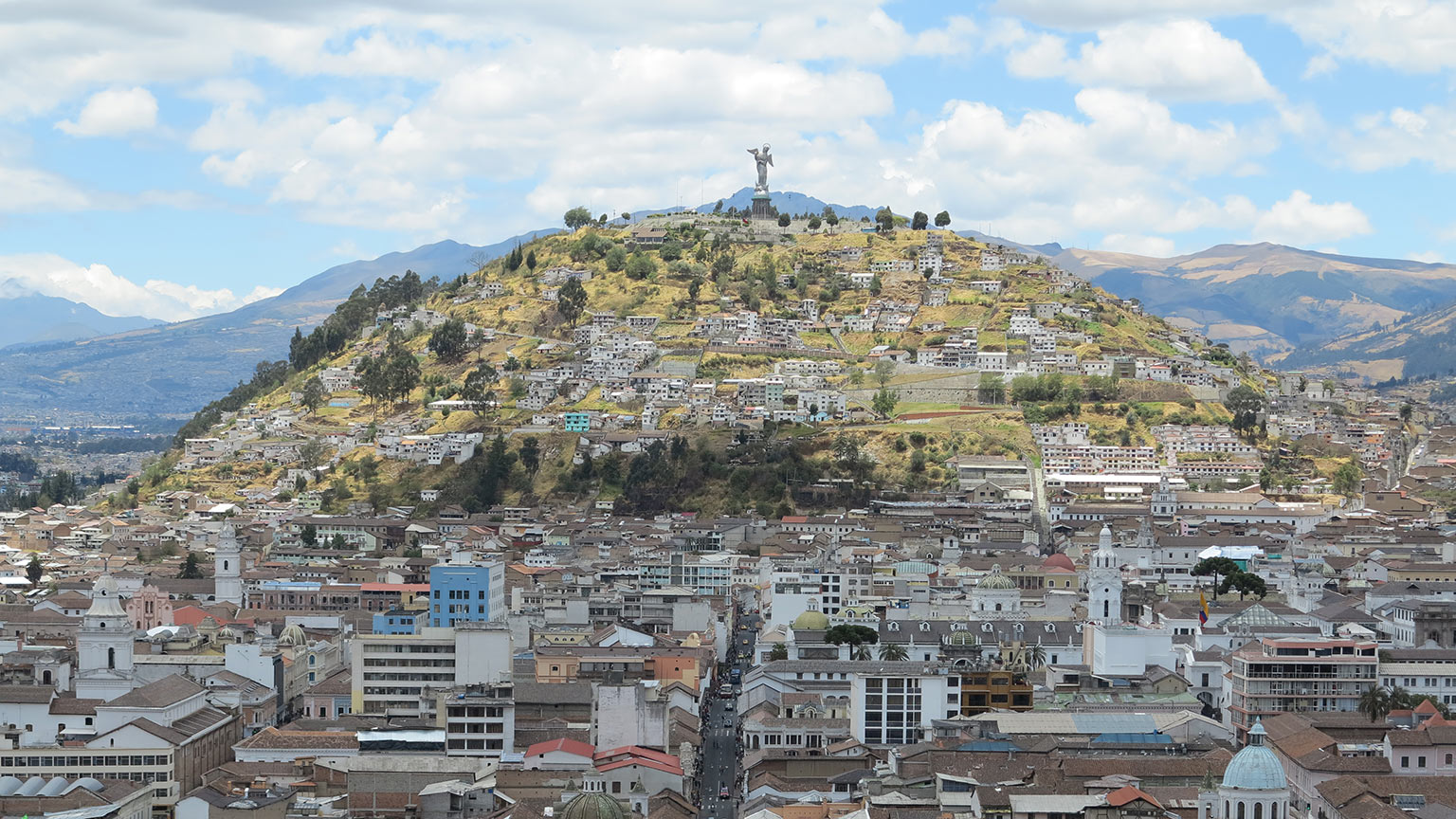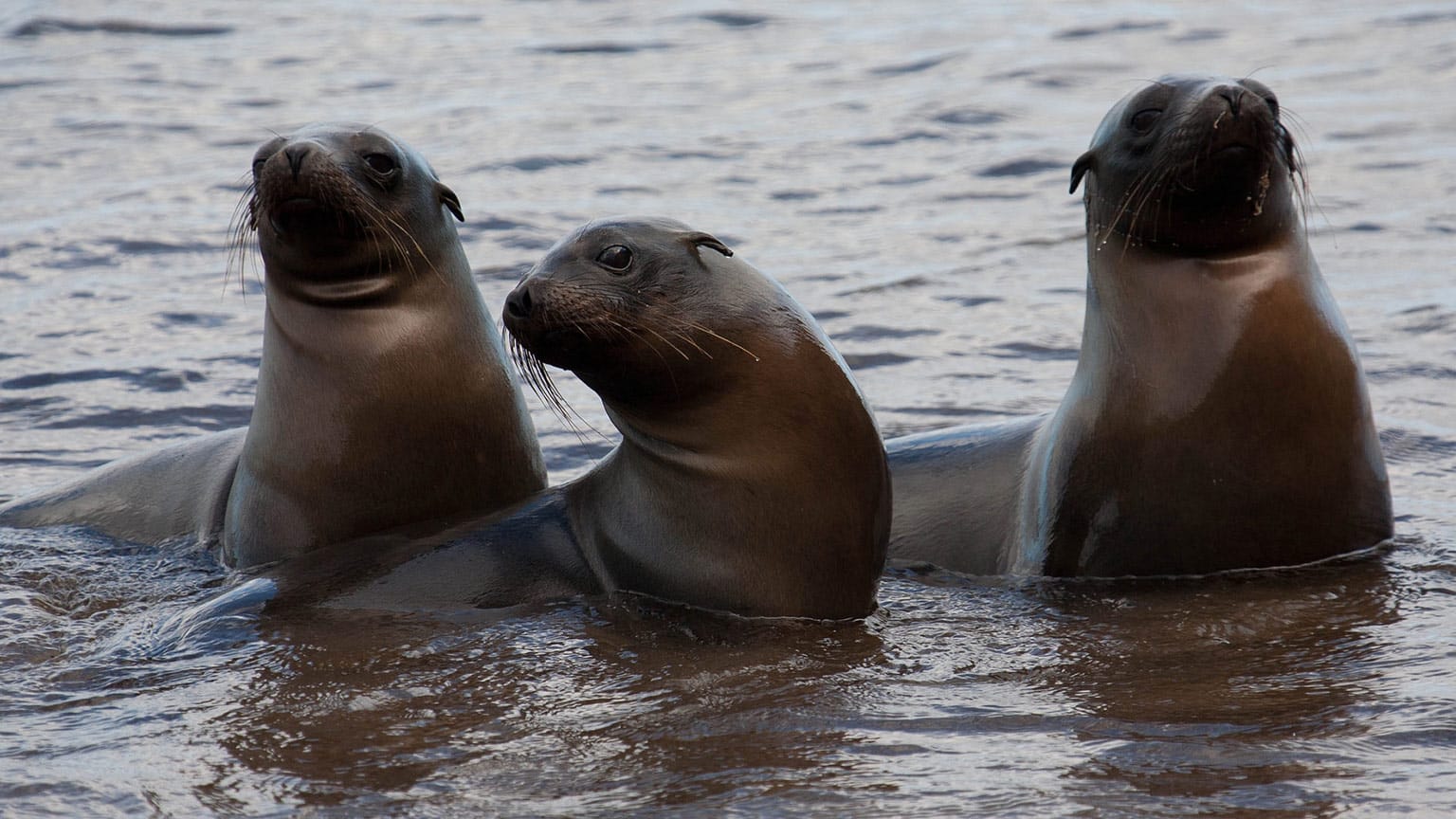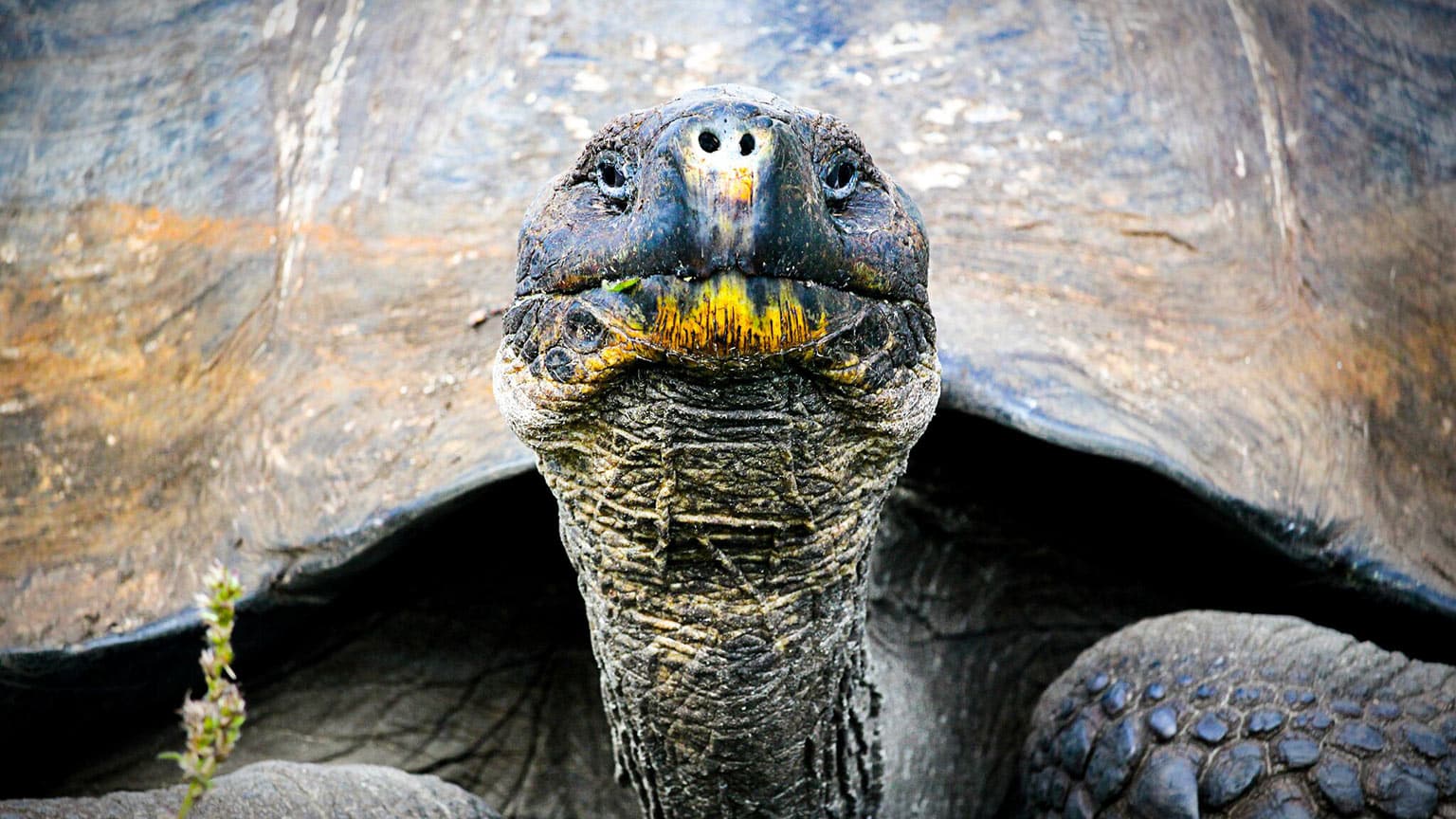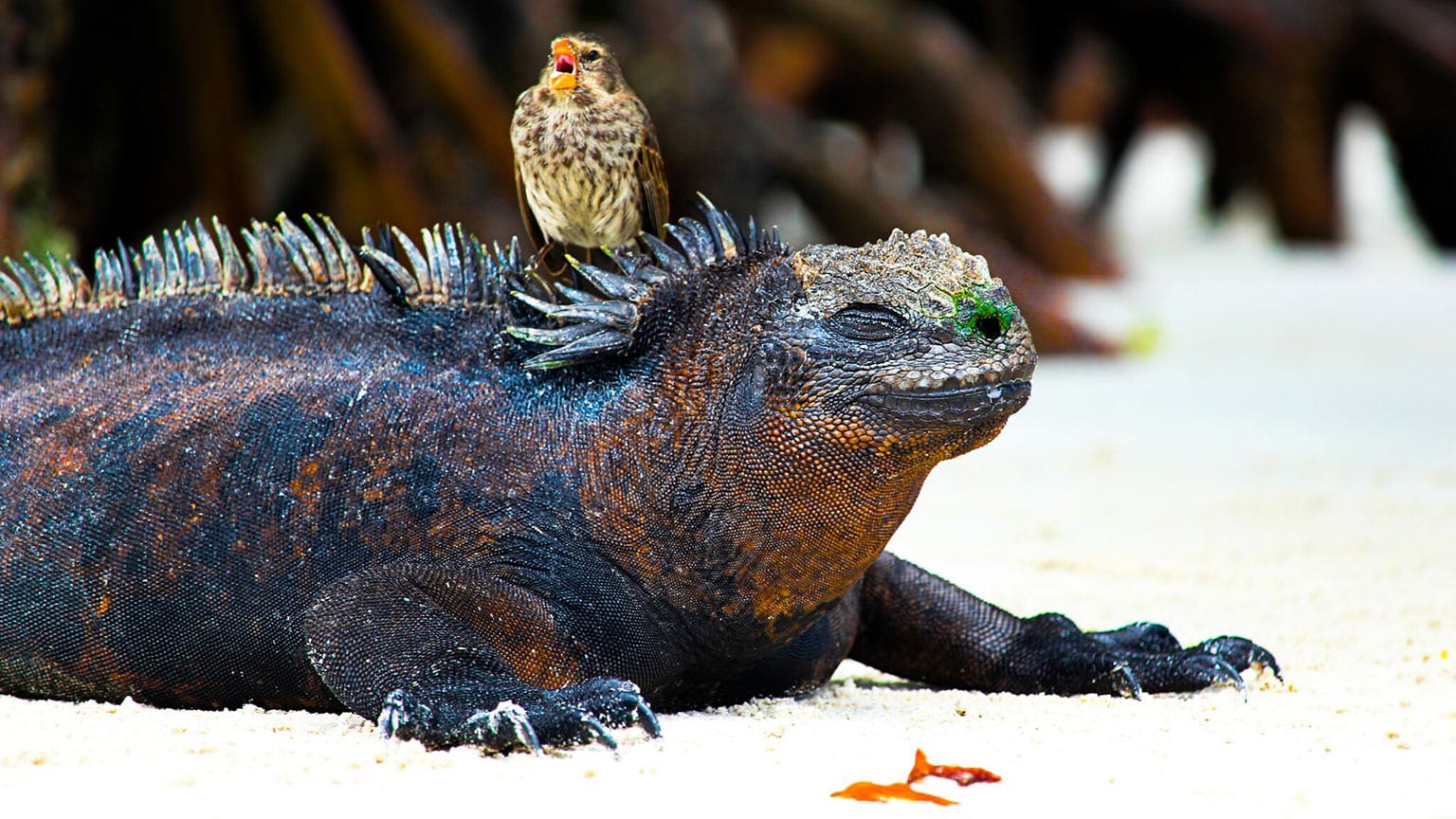Details
Frequently Asked Questions
Please read our general
FAQs, where you can find essential information that applies to all of our programs.
Resources to Learn & Teach about Ecuador and the Galápagos
Visit our
recommended reading page to see the list of books GEEO recommends reading before your program (this is not required reading). We also have
lesson plans and
Pinterest boards that may be useful for you as you learn about your destination and prepare to bring lessons back to your classroom.
Terms and Conditions
It is very important for you to visit our
Terms and Conditions page before signing up for this program.
GEEO Program Confirmation Process
Most GEEO programs are officially confirmed to run once 4 participants have registered. If at least 8 people sign up by our designated deadline, the program will run as a private GEEO trip. Should enrollment fall between 4 and 8, the trip will still take place, but it may transition into a
shared departure with our partner tour operator, G Adventures. In this scenario, the itinerary, dates, and pricing for those who have already registered will remain unchanged, although additional travelers from outside GEEO may join the trip.A large majority of GEEO programs remain private for just educators, retired educators, and their guests. We encourage you to sign up for any program that interests you, and we’ll keep you updated throughout the process—first when 4 participants have registered and again once 8 people have signed up. As always, we recommend exercising caution when making non-refundable travel arrangements (for example, booking flights with flexible change or cancellation policies) until your program is confirmed to run.
Cancellation Policy
All cancellations must be submitted to GEEO in written form by emailing your request for cancellation to
travel@geeo.org. If you do not receive a confirmation that we have received your written cancellation request, please call us at +1 347-433-6674. Verbal cancellation requests will not be honored.
- If you cancel 60 days or more prior to the start of your program, all payments will be refunded excluding your $350 deposit, which is kept on file for future use and never expires. (Exception for participants who receive grants from our university partners: To address disruption caused by cancellation from grant recipients, deposits paid by grant recipients are forfeited upon cancellation.)
- If you cancel between 30 and 59 days prior to the start of your program, you will receive a 50% refund and your deposit will be kept on file for future use and will never expire.
- If you cancel within 30 days prior to the start of your program, you will receive no refund, but your deposit will be kept on file for future use and will never expire.
Trip Notes & Expectations
Before you decide to travel with GEEO, it is important that you read all of the information about the program contained on this page. Our programs are quite adventurous, and we find that clients who read the trip details in full are happier with their experiences.
- ACCOMMODATION: Our program fees are based on double-occupancy accommodation (see "Single Travelers" below if you do not have a travel companion and would be interested in a private room). Our accommodations are chosen to provide a safe, conveniently located place to sleep. While you may be pleasantly surprised, please don't expect luxury, as we prioritize keeping our programs affordable.
- TRANSPORTATION: We use a mix of transportation that gets our guests from location to location safely. Sometimes you will have full days and/or nights of transportation as our trips tend to cover a lot of ground. Transportation will often be an adventure in itself.
- LUGGAGE: The maximum baggage allowance for domestic flights between Quito and the Galapagos Islands is one piece of luggage per person weighing a maximum of 23 kilograms (50 pounds), plus one carry-on piece weighing a maximum of 10 kilograms (22 pounds). You must be able to easily carry or roll your luggage, so do not over-pack. The carrying of your luggage remains your responsibility at all times.
- ITINERARY CHANGES: The itinerary is subject to further changes, dependent upon new regulations made by the Galápagos National Park or seasonal points of interest. The Galápagos National Park Service dictates the itinerary to G Adventures and GEEO, therefore the details of this itinerary could change a bit when you arrive. The content will be pretty much the same, but the order of the activities may change.
- TRANSIT CONTROL CARDS AND TAX: The Consejo de Gobierno (local government council) has implemented a system of Transit Control Cards at a fee of $20 USD per person. This card is to be purchased in CASH at a counter in the Quito airport before boarding the flight to the Galápagos. Please retain this card along with your passport as you will be required to present this upon arrival to the Galápagos Islands. Please note that this applies to all tourists entering the Galápagos Islands and is a supplement to the existing entry fee to the National Park and is not controlled by tour operators or travel agencies. It is the first of a number of initiatives to track, control, and maintain the sustainable tourism targets set out by the Galápagos National Park and the Ecuadorian government in an attempt to preserve the fragile environment of the archipelago. There will also be a municipal tax of $5 USD per person charged locally upon departure from Isabela Island.
- GALÁPAGOS ISLAND PARK ENTRY FEE: The Ecuadorian government currently levies a Galápagos Islands Park entry fee of $200 USD per person. This is payable at the airport upon arrival in the park. It is not included in the cost of the tour and must be paid in CASH. This fee funds Park maintenance and supervision in Galápagos, as well as ecological study, conservation, and infrastructure development in Ecuador’s other National Parks. Entry fees, and the funds they generate for the National Park System, are among measures taken by the Ecuadorian government to protect its natural heritage.
- SEA SICKNESS: The water is unpredictable (sometimes choppy, sometimes not), so definitely bring motion sickness pills for the boat rides between islands.
- INTERNATIONAL TICKET NUMBERS: Foreign travelers are exempt from paying a tax on domestic flights in Ecuador. To prove that you are indeed a foreign traveler, you must enter your international ticket number (ITN) into the Good To Go check-in system. Travelers who do not submit ITNs at least 30 days prior to Day 1 of their tour will be required to pay the domestic tax on all included flights.
- ALTITUDE: Quito is at a high altitude and can be chilly in the evenings. Make sure you check the weather and have appropriate clothing. Also, you may have a headache and nausea when you arrive, which might be caused by mild altitude sickness. The best thing to do is to take it easy and try not to be too active. See a doctor in the rare circumstance that your symptoms are severe.
- SAFETY IN QUITO: Please take care when wandering about the city on your own, as pickpockets and purse-snatchers are common, particularly in the Old Town. Be safe and leave your passport, credit cards, and cash you don’t need in the hotel’s safety deposit box. Most Quiteños are honest and genuinely helpful and friendly, but be safe and enjoy the city!
- ACTIVITY LEVEL & PACE: This trip includes light walking and hiking that is suitable for most fitness levels. Some of the optional excursions on this trip require participants to be in good shape, capable of hiking up to five hours. You are of course welcome to skip these optional excursions if you do not feel up for it. Those who choose to snorkel must be cautious that they can handle the water conditions, as some parts of the waters around the Galápagos have strong currents. We recommend always carrying snacks with you. Meals can sometimes be far apart.
- GROUP LEADER: Please make sure you understand the role of your tour leader on this trip. All GEEO/G Adventures group trips are accompanied by one of G Adventure's group leaders, which they refer to as Chief Experience Officers (CEO). The aim of the group leader is to take the hassle out of your travels and to help you have the best trip possible. They will provide information on the places you are traveling through, offer suggestions for things to do and see, recommend great local eating venues, and introduce you to our local friends. Our itineraries often have plenty of free time to explore on your own. While not being guides in the traditional sense, you can expect them to have a broad general knowledge of the countries visited on the trip, including historical, cultural, religious, and social aspects. We also use local guides where we think more specific knowledge will add to the enjoyment of the places we are visiting – we think it’s the best of both worlds.
Single Travelers
Half of GEEO’s participants travel by themselves, so please don’t worry if you do not have a travel companion for your trip. Our program fee is for one traveler in double-occupancy accommodation, and GEEO can find you a roommate of the same gender if you do not have a travel companion. Most of our programs have a “My Own Room” option, also known as a “Single Supplement,” which is an extra fee that you can pay to have a room to yourself. You will only incur an additional charge if you specifically request a single room. To see the price for the “My Own Room” option, please find your program on our
extra services page. If you want to room alone, please email
travel@geeo.org to request a single room.
Emergency Contacts
Should you need to contact G Adventures during a situation of dire need, it is best to first call their local G Adventures office. If for any reason you do not receive an immediate answer, please leave a detailed message and contact information so they may return your call and assist you as soon as possible.
EMERGENCY CONTACT NUMBERS
G Adventures Office - Lima, Peru
During office hours (weekdays, 9am-6pm local time): +51 1 241 1650
After hours emergency number: +51 99 758 2712 (WhatsApp Available)
If for any reason you are unable to reach the G Adventures local office, please call the numbers listed below to connect with their Sales team, who will happily assist you.
Toll-free, North America only: 1 888 800 4100
Calls from UK: 0344 272 0000
Calls from Germany: 0800 365 1000
Calls from Australia: 1 300 796 618
Calls from New Zealand: 0800 333 307
Outside North America, Australia, New Zealand, Germany and the UK: +1 416 260 0999
Packing List
Please
read this article on GEEO’s blog for our staff’s suggestions on the best gear to pack for your upcoming travels. You must be prepared to carry your own bags and be comfortable carrying them up and down stairs, on and off transportation, and to hotels. As a rule, we try not to have to walk more than 15-20 minutes with your bags, which is why we recommend keeping the weight of your bags between 22-30 lb. Most travelers carry a backpack or rolling bag of small to medium size. No XXL bags please! A daypack is also essential for carrying everyday items. Space is limited on transportation, so there is a limit of one main piece of luggage per person plus a daypack per person.
The maximum baggage allowance for domestic flights between Quito and the Galapagos Islands is one piece of luggage per person weighing a maximum of 23 kilograms (50 pounds), plus one carry-on item weighing a maximum of 10 kilograms (22 pounds). Additional bags or excess weight charges may apply. These charges are the responsibility of the traveler.
Please note that Galápagos is a protected National Park, so your luggage will be checked before arrival and departure to and from the islands. Don’t bring any food, seeds, or other organic material that could affect the delicate ecosystem of the islands. That said, a participant in 2013 told us, “You can bring any processed food, even packaged nuts—this was very important for someone like me with dietary restrictions. I brought tons of protein bars, nuts, and granola!”
Suggested (click to expand)
- Windproof/waterproof rain jacket (very important)
- Personal clothing for cool to hot weather – we recommend packing 7 or 8 days of outfits so you only have to do laundry once
- Fleece top – it can fall into the 40s Fahrenheit!
- Light hiking boots or sturdy walking shoes
- Sport sandals or flip-flops
- Two bathing suits and a small quick-dry towel
- Daypack
- Sunblock
- Sunglasses
- Sun hat
- Water bottle
- Watch or alarm clock (or use your phone)
- Toiletries – important: some hotels do not give you soap and shampoo
- Camera (or use your phone)
- Motion sickness pills – Dramamine, bring both less-drowsy and regular formulas
- First-aid kit, including contain lip salve, aspirin, bandaids, anti-histamine, Imodium or similar tablets for mild cases of diarrhea, electrolyte powder, insect repellent, extra prescription drugs you may be taking
Optional (click to expand)
- Underwater camera or waterproof phone bag
- Snorkeling mask (there will be times where you can go snorkeling, but there might not always be a mask rental available)
- Wetsuit (the water can be chilly, and some have said in the past they wish they had brought their wetsuit)
- Rubber boots – optional: the hikes can be really muddy
- Binoculars
- Travel pillow
- Light weight silk sleep sheet
- Money belt
- Phone/tablet for internet – most hotels have WiFi
- Chargers for electronics as well as converters/adapters, if needed
- AirTags or Tile trackers
- Packing cubes
- Earplugs
- Snacks – packing a few granola bars is a good idea; you can buy snacks when you get there too, so don’t go crazy
- Ziplock bags
- Reading/writing material
- Hand sanitizer/baby wipes
Documents (click to expand)
- Passport (with photocopies)
- Any entry visas or vaccination certificates required
- Travel insurance ID card
- Flight itinerary/boarding pass(es)
- USD/EUR cash
- Credit/debit card
- G Adventures vouchers
- GEEO Classroom action plans for your group – this is sent a few days before departure
Laundry
Laundry facilities are offered by some of our hotels for a charge. You can also use a local laundromat, if necessary. We recommend packing enough clothes so you don't have to do laundry.
Passports and Visas
All GEEO programs require that the participant have a valid passport. Please see our general
FAQ for information on obtaining a passport. As with all of our trips, we try to provide the most accurate information we can, but governments sometimes change visa rules. It is your responsibility to double check the information we provide below by searching
the U.S. State Department's website.
PASSPORT
Your passport must be valid for
at least six months beyond your intended departure date from Ecuador.
VISA
U.S. citizens do not require a visa to travel to Ecuador. Non-American participants should check online to determine if they need a visa.
Galápagos National Park Fee
All visitors to the Galápagos Islands must pay a Galápagos National Park entrance fee of
$200 USD, which is payable in cash at the airport.
Transit Control Card
The Consejo de Gobierno additionally requires all travelers to purchase a Transit Control Cards for
$20 USD per person. This card must be purchased in cash at a counter in the Quito airport before boarding the flight to the Galapagos. Please keep this card along with your passport as you will be required to present them upon arrival to the Galapagos Islands. This applies to all tourists entering the Galapagos Islands and is a supplement to the existing entry fee to the National Park and is not controlled by tour operators or travel agencies.
Money Exchange
The local currency in Ecuador is the U.S. dollar, so there is no need to exchange currencies. Make sure you bring plenty of cash to the islands—we recommend around $700-800—as ATMs can be hard to find or out of service, especially on Floreana. Small bills are better, so bring plenty of $5s and $1s. Credit cards are rarely accepted on the islands.
Tipping
It is customary to leave a small tip for service providers, such as waiters, if you are pleased with the service. Tipping is an expected, though not compulsory, component of this program and an expression of satisfaction with the people who assist you on your trip. Although it may not be customary to you, it is of considerable significance to the people who will take care of you during your travels.
There will be opportunities during the trip to tip your local guides or drivers. You may do this individually, or your tour leader may offer to collect the money and give a tip on behalf of the group. Ask your tour leader for specific recommendations based on the circumstances and expectations. Also, at the end of your program, if you felt your G Adventures tour leader did an outstanding job, a tip would be appreciated. Tipping amounts are entirely your personal preference, but as a guideline:
- Service providers/Waiters: $1-2 USD for snacks or 10% of a meal bill
- Local guides and drivers: $5-10 USD per person per day
- Tour Guide (CEO): $5-10 USD per person per day
Vaccinations
GEEO cannot provide any medical advice, so it is very important to consult your doctor or a travel clinic about which vaccinations you will need for your trip. We recommend contacting
Passport Health, which has travel clinics located throughout the United States. You can also check the
CDC's recommended vaccinations for your destination. Please take this seriously!
According to the CDC, the risk of yellow fever is considered very low or absent in the parts of Ecuador that you will visit. It is compulsory to show a valid Yellow Fever vaccination certificate if you are traveling in from a
Yellow Fever endemic country. If required, Yellow Fever inoculations need to be administered at least 10 days prior to your entry into the country.
Flights
We find the best prices for flights are often available around 90-120 days before departure, but of course this varies greatly from route to route and year to year.
You should wait until this trip is confirmed before you book non-refundable flights. GEEO and G Adventures bear no responsibility for any flights purchased before the trip is confirmed.
This program begins and ends in Quito. Please double-check our itinerary for the date by which you must arrive in Quito. You may want to arrive in Quito one or more days early in case you have flight disruptions. You can arrive at any time you choose, but try to make it in time for our 6:00 p.m. Welcome Meeting on Day 1. You can depart from Quito any time on the final day of the program, or stay later to see more of the city.
Plugs and Converters
Ecuador uses the same plug design and voltage found in the United States—a type-A plug and 120 Volts—so there is no need for electrical adapters or converters.
Weather
Quito, although close to the equator, is at a high altitude. Therefore, the temperature during the day tends to be in 60s F, and at night it can get into the 40s F. Please make sure you have the proper clothing packed!
The climate of the Galápagos Islands is tempered by the Humboldt Current, so you will not experience the extreme heat found elsewhere at this latitude. The warmest weather is from December to June, when temperatures range from 72-90° F, and the water temperature is in the mid 70s F. From July to November, temperatures are cooler and range from 60-75° F (18-24°C), and average water temperature rarely reaches 70° F.
🗣️ Advice From Past Participants
“There are not many alternative activities. If you choose not to do something, you have to sit around and wait for the other people (because tourism in the Galapagos is strictly regulated).”
“We did a lot of snorkeling, and I think I would have bought a wetsuit top, if I knew the water was going to be a bit chilly.”
"Wetsuits are rentable in the Galapagos."
“Quito is a remarkable city and touring it and the surrounding area should not be missed. Visitors should be encouraged to plan to add a day or two to see it.”
“It gets cold at night on most of the islands!”
“It was much hotter than I thought it would be! I packed more warm things. Also, it is important to have a lot – maybe $700 to $800 – of cash on you. A lot of us ran out of cash, and it was hard to get to an ATM.”
“A collapsible walking stick might help with hiking but no need for boots. Bring lots of sunscreen. Also, altitude sickness medicine really helped in Quito. I had a much better time there than other group members because I took it. Also, seasickness medicine is a must for the island boat transfers.”
“Be prepared for the hike to the volcano! It was long, and I got soaked by the end, which got cold! Dress in layers. Food in the islands is much more expensive than in Quito. “
“Ecuador and Galapagos are essentially a cash-only destination. Very few places accepted credit cards, and extra activities all had to be paid in cash. I think I spent at least $1,000 in cash during my time in Ecuador/Galápagos. It is very important to emphasize the need to have bills in small denominations.”
Snorkeling and Diving Gear
You can bring your own snorkeling gear and wetsuit, or rent gear in the Galápagos. G Adventures provides the snorkeling gear for free and then you would need to rent a wetsuit for $5-$10 a day. They sometimes don’t have wetsuits for larger people or petite sizes. The water can be cold in the Galápagos, but one participant told me that she did not rent the wetsuit and was just fine without it.
While our itinerary does not list much snorkeling, I have been told by our group that there were lots of opportunities for snorkeling on the trip and that they snorkeled on four separate occasions. Some of the locations have a strong current and are too deep to stand, other locations are much calmer and easier to handle. You must use your judgment and tour leader’s advice to determine whether it is safe for you to go into the water.
If you wish to go diving, there are dive shops on the islands and your tour leader can help put you in touch with one of them.
Time in Quito
Advice from GEEO’s Executive Director Jesse Weisz:
“Quito is a nice city to visit and having at least one day to explore is advised. Quito’s old town is a UNESCO world heritage site and can be explored on foot during the day. You should not miss the Basilica of the National Vow (Spanish: Basílica del Voto Nacional). The building is noted for its grotesques in the form of native Ecuadorian animals, such as armadillos, iguana, and Galápagos Tortoises instead of the typical Gargoyles you find on a Neo-Gothic cathedral. If don’t have a fear of heights, you should climb to the top of the back tower for a great view of the city.
Another way to get a great view of the city is by taking a taxi to the top of Panecillo, a hill south of the old town. Please do not attempt to climb this hill, as there are muggings on a regular basis reported in that area. A taxi ride to the top and return to your hotel typically costs about $20.
Lastly, if you want to see Quito from above, you can take a cable car (teleférico) to the top of a mountain overlooking Quito. It costs $8.50 and the 10-minute ride takes you up to an altitude of 13,290 feet. If you want a physical challenge you can then hike to the top of Vulcan Pichincha. The hike takes an estimated 2-2.5 hours each way, so this is an activity that could fill a whole afternoon. It is windy and can be cold, so make sure you have the appropriate clothing.
The actual Equator is only a 30-45 minute drive north of Quito. At the Equator, you will find a large monument that has an admission fee. This is where the French thought the equator was, but they were wrong and the actual equator is about 240 meters from the Equator Monument. Feel free to visit the nearby Intiñan Solar Museum, which claims to have the real equator running through their property. Just keep in mind that the science experiments they show you there are mostly inaccurate and downright silly. If you are a science teacher, this is a can’t miss attraction for a good laugh.
While I did not have time to go, there are three-day trips that have been recommended to me, which we list in the Optional Activities section of this webpage. Saquisili Market and Cotopaxi National Park make for a full day of hiking and shopping. I would make sure you have a few days to acclimatize to the elevation before signing up for that one. Bellavista Cloud Forest is at a lower altitude and seems like a wonderful way to see the nature of the area. Another option is Otavalo where you will be able to see one of the largest markets in all of South America.
You should be able to book all of these activities at the front desk of our hotel in Quito.
Lastly, if you are traveling around the city by taxi, make sure it is an official taxi. Your hotel can hail one for you which can be trusted.”
"Recommendations:
1. Take a waterproof bag or backpack for boats and snorkeling. Assume boat rides will be wet. 2. An underwater camera pouch worked fine for snorkeling but definitely not as clear as underwater camera.
2. Consider rain pants if choosing the Cotopaxi hike: There was sleet during our hike up.
3. If you like the water, take your own snorkel and mask. It doesn't take much space and avoids having to adjust a different mask every time you snorkel. (I really appreciated having my $40 prescription mask to see.) Some of the boats have flippers on board.
4. While the water isn't cold in June, I was happy to have brought and used a wetsuit vest and a long-sleeve swimsuit. Made all the difference in enjoying the water."
"Check a few weather websites before final packing. Quito is cool in June/July. BUT you only need one or two long-sleeved shirts if you're not in the city long. Bring more shorts and tees because the islands are dreadfully humid."

